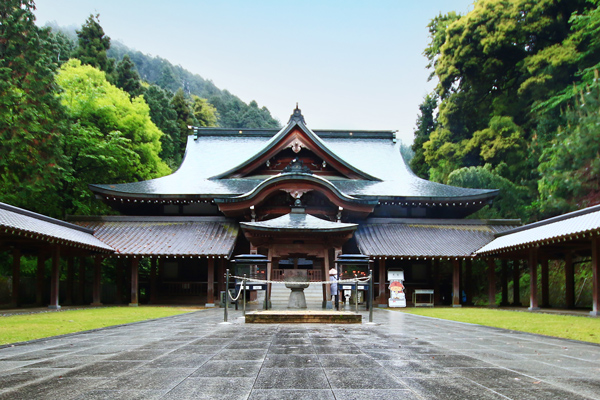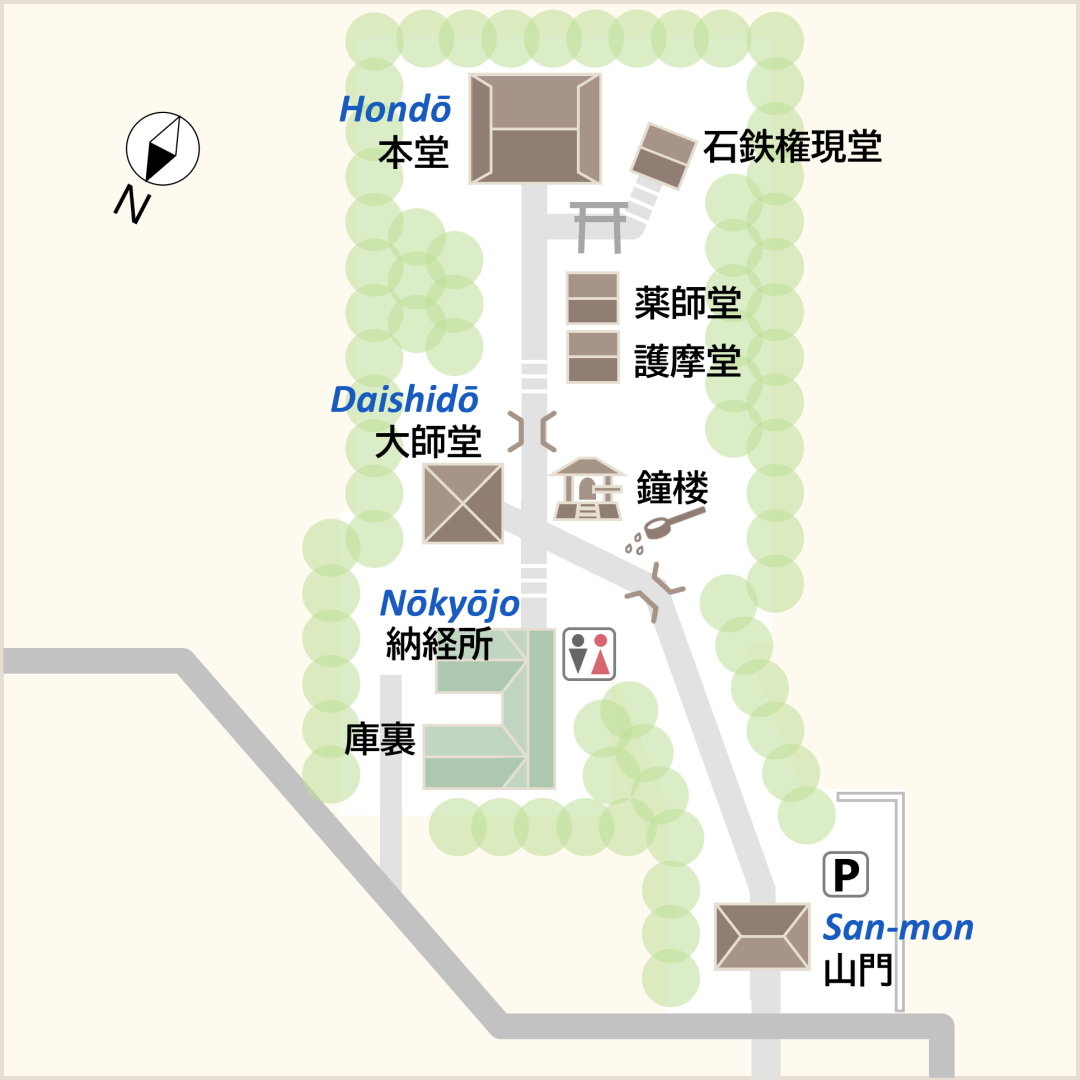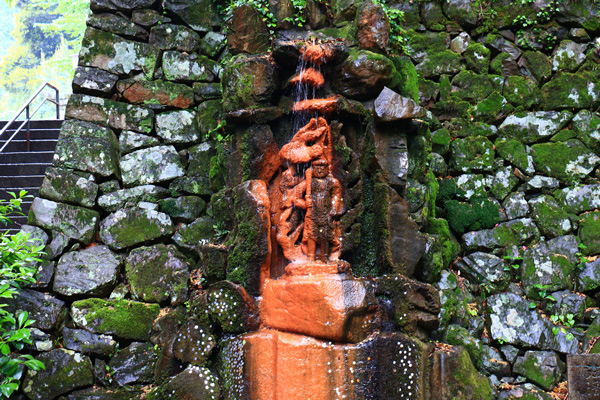The Shikoku Pilgrimage Temple Guide
Temple 64, Maegamiji

Precinct map

History of the temple
Maegamiji is located at the foot of Mt. Ishizuchi (elevation 1982 m), one of the seven sacred mountains of Japan. It is the head temple of the Ishizuchi School of the Shingon Sect and the fundamental center of Shugendo. The temple was founded during the reign of Emperor Temmu (673-686) by En no Gyoja Ozunu, the founder of Shugendo. Ozunu, who had trained himself on Mt. Ishizuchi, saw Shaka Nyorai and Amida Nyorai appear as the Great Gongen to relieve the suffering of mankind. He carved statues of them which he enshrined in the temple. Emperor Kanmu (reigned 781-806) prayed to be healed from an illness, and his wish was granted. The emperor built seven main buildings and named the temple Konjikiin Maegamiji. Since then, the temple had been worshiped by many successive emperors including Emperor Montoku, Emperor Takakura, Emperor Go-Toba, and Emperor Juntoku. Kukai/Kobo Daishi later visited Mt. Ishizuchi twice, where he is known to have practiced the Kokuzo Gumonjiho and the Goma fire ritual, and also fasted.
During the Edo period (1603-1868), the temple became a temple of the Matsudaira family, the feudal lords of Saijo, Ehime, and the temple flourished, as evidenced by the conferral of the three-leaf hollyhock crest on the temple. However, due to the edicts ordering the separation of Shinto and Buddhism in 1868, the temple's territory was confiscated and the temple was forced to close for a time. In 1889 the temple was restored, and it continues to pass on Buddhist teachings as the head temple of the Ishizuchi School of the Shingon Sect.
The annual Oyama-biraki (mountain opening) on July 1 is held at the temple, and believers dressed in white gather to chant "Nammai-da" to the accompaniment of blowing conch shells.
Highlights
Gotaki Gyoba Fudo
Located on the right after crossing the Jodo Bridge at the right end of the Daishido. In the past, waterfall ascetic practices were held here.
Oku-Maegamiji
Located in the middle of Mt. Ishizuchi and there is a ropeway that allows visitors to make a pilgrimage during the Oyama-biraki period.

Annual Events
| January 1 to 3 | Shushoe (New Year's Prayer Ritual) |
| February 3 | Setsubun-e/Hoshi Matsuri(Star Ritual for Warding off Evil) Outdoor Goma Fire Ritual, Gogen sama open to the public and Fuku Nage will be held |
| May | Kanbutsue/Hana Matsuri (Buddha's Birthday) Sweet tea will be served at the entrance of the temple residence hall |
| May | Sand stepping |
| June 30 | Summer Mountain Training Opening Outdoor Goma Fire Ritual |
| July 11 | Summer Mountain Training Closing Outdoor Goma Fire Ritual, Gogen sama open to the public and Fuku Nage will be held |
| December 31 | Shushoe (New Year's Eve Prayer Ritual) New Year's Eve bell and offering Gongen-sama's talismanwill be held. As well as Goma Fire Ritual at Fudodo and Gogen sama open to the public at Gongendo) |
Details
Names: Ishizuchisan, Konjikiin, Maegamiji
Denomination: Shingon sect, Ishizuchi school
Principal Image: Amida Nyorai
Founder: En no Gyoja Ozunu
Founded: Late 7th century
Access
Address: 1426, Sunouchi-ko, Saijo City, Ehime 793-0053
Phone: 0897-56-6995
Parking: Available (free)
Lodging: None
Official website: None
